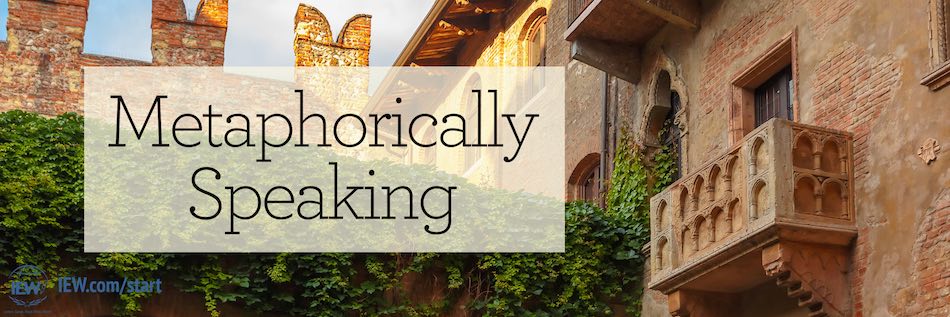
What is a metaphor? A metaphor is a figure of speech that says something is something else in order to describe it more powerfully. Metaphors are common in poetry, where poets want to craft vivid word pictures in just a few lines. Carl Sandburg doesn’t say, “The fog is quiet.” Rather, he masterfully put it this way: The fog comes on little cat feet.1 Comparing the fog to a cat creates a beautifully memorable image in just a few words. Not only employed in poetry, metaphors are often found in classic prose as well. One of the most famous lines in classical English is part of an extended metaphor: But soft! What light through yonder window breaks? It is the east, and Juliet is the sun.2
Memorable metaphors such as those are not easy to come up with. For one thing, a good metaphor tends to be used so often that eventually it becomes a useless cliché. The first few hundred times someone wrote that it was “raining cats and dogs,” it was probably an effective literary device, but not anymore. Some other examples of the multitude of worn-out metaphors are such faded gems as “ripe for the picking,” having “bigger fish to fry,” being “caught in a web of lies,” philosophically declaring that “life is a journey,” and comparing the streets in the summer to a sizzling frying pan. (“It was so hot you could fry an egg on the sidewalk.”) No matter how clever they sound, a good writer avoids using clichéd metaphors. However, it might be a good exercise in learning to craft your own metaphors by making a list of the old tried-and-true ones.
In crafting metaphors, remember not to use the words “like” or “as.” Comparisons using those words are known as similes. Unfortunately, many similes one encounters also fall into the useless, worn-out category, such as “hard as a rock,” “dumb as an ox,” and “dead as a doornail.” (Does anyone even know what a doornail is?3) Try to come up with your own. Because you have a mind like a steel trap. (Sorry, I couldn’t resist.)
Metaphors are powerful because they evoke colorful visual imagery. Which is better? “The outlaw silently circled back, closing in on his prey.” or “The outlaw silently circled back, closing in on the deputy.”? Saying metaphorically that the deputy was like hunted prey implies the outlaw is a wild animal, increasing the tension for dramatic effect.
Creating memorable metaphors isn’t easy, but it’s worth the effort. Your readers will gobble them up voraciously and come back begging hungrily for more.
- “Fog” by Carl Sandburg.
- Romeo and Juliet, by William Shakespeare.
- “What is a Doornail and Why Would It Be Dead?” Quora.com.
|
Trained to proofread legal documents for one of Ohio's largest law firms, Julie Marie Ash brings many years of experience as a professional legal assistant to IEW's editorial team. A native of Southern California, Julie Marie enjoys the peace and quiet of rural life in Oklahoma where she gets to indulge in two of her favorite pastimes: gardening and photography. |

